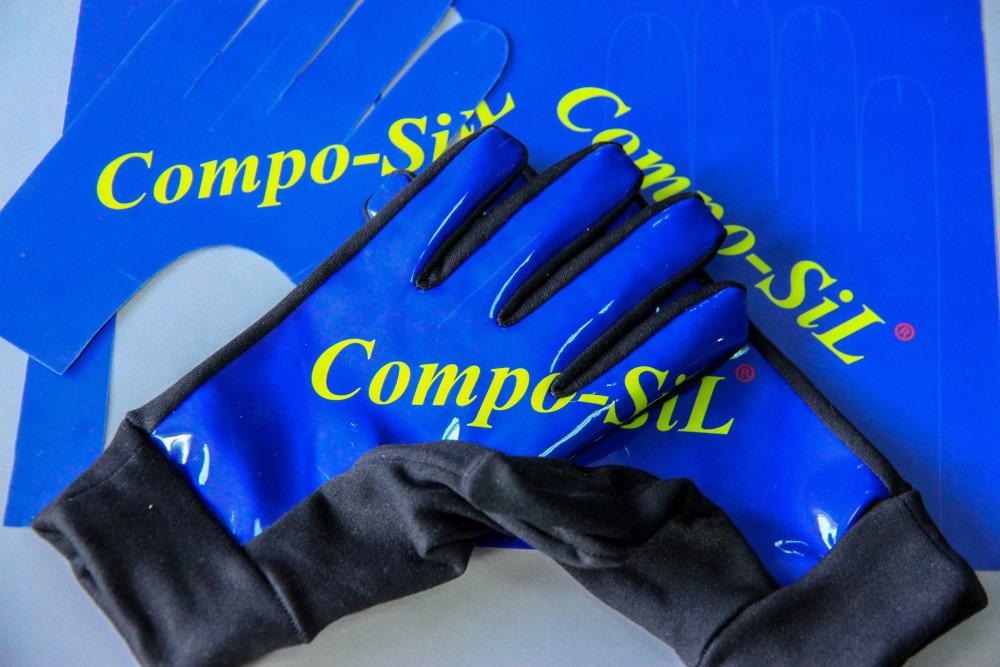Experienced silicone product maker, General Silicones (GS), shares how its Compo-SiL® technology allows for innovation in sporting glove design.

Thanks to athletes’ incredible feats, the benefits of silicone rubber-based “sticky” sporting gloves received coverage by major news outlets. The increased occurrence of single-handed catches in American football even led The New York Times to request the MIT Sports Lab to study silicone football gloves stickiness.
Non-slip silicone sports gloves benefit many sports
The controversy around the apparent benefit of silicone sports gloves’ firm grip is just an illustration of the material’s inherent strength. There are many other sports where a secure grip offers essential benefits. Team sports like baseball, hockey need a solid hold of the bat and stick, gym user need a sturdy grip for their weightlifting routines. Outdoor sports like fishing, cycling, and sailing benefit from the firm hold of silicone gloves and the material’s resistance to water and UV damage.
Limitations of liquid silicone rubber for textile manufacturing
Companies sourcing a reliable supplier of sporting gloves are currently limited by manufacturing technology. Traditional production using liquid silicone rubber is costly. Liquid silicone application is hard to control for the manufacturer. Production costs rise significantly when high quality is required, making the final product too costly for the mainstream market.
Compo-Sil® for the best sport glove manufacturers
General Silicones innovates mass production with silicone rubber with the introduction of Compo-SiL® technology. GS creates and ships Compo-SiL® silicone rubber sheets with a thin layer made of modified polyurethane (PU). This modification allows for applying silicone rubber to gloves through standard roll-to-roll and heat press treatment. Using established adhesives like PUR and HMA, the glove textile adheres to the PU layer of Compo-SiL®. With Compo-SiL®, GS opens the doors to product innovation and process cost reductions to glove brands wanting to bring silicone’s advantages to their product lines.
Compo-SiL®‘s PU layer allows for colorful prints
The high-stress sporting gloves endure quickly damages prints and insignia. Club imprints soon deteriorate under stress and fade under the sun. Brands opting for silicone ink prints have restricted design options due to the limits of silicone ink printing techniques. Compo-SiL®, on the other hand, offers complete freedom of creative design. By enabling the use of standard printing technology on the PU layer, brands have complete artistic freedom.
Stable brand colors even during frequent use
After applying the printed Compo-SiL® rubber to the glove base material, the inward-facing printed PU layer is protected from mechanical stress, water, and UV radiation by the silicone top layer. Silicone is well known to protect from UV and environmental damage. Brands increase their customer satisfaction with gloves that last longer. Sports and club insignia show their vivid colors for the entire lifetime of the gloves.
Decrease glove cost by adding colors/shades with single print
Traditional Silkscreen printing quickly struggles with colorful designs and roll-to-roll manufacturing. Each color has to be applied separately and baked in an oven before using the next color. This process is time-consuming and costly.
Compo-SiL® allows direct high-quality digital printing, increasing the production speed at lower expenses.
Gradient color effects on sporting gloves
Gradient color effects are impossible with screen printing. As Compo-SiL® allows for digital prints on the PU layer, brands retain greater artistic freedom.
Three-dimensional metal and wooden effects
Creating the look of wood grain or metal surfaces is hard to achieve with traditional printing methods. Here again, digital printing on the PU layer of Compo-SiL® opens new opportunities for expression.
No weakening and glove fabrics damage from baking
Screen printing requires baking of the prints. Each time this adds the risk of weakening or damaging the structure and properties of the glove fabric. Baking is not needed to achieve adhesion with Compo-SiL® silicone rubber. Glove brands reduce quality control concerns and lessen the risks of product returns.
Vegan leather sporting gloves
The demand for reducing plastic use is reaching glove brands as well. Silicone is a sustainable alternative to plastic, reducing the brand owners’ risk of being questioned on product sustainability.
Removing brands from MOQ demands
When sourcing a supplier, the question about MOQ requirements rises soon. Smaller sports teams and clubs quickly face the rising cost of traditional printing for small quantities. The conventional application of liquid silicone rubber is expensive as well. Compo-SiL®, on the other hand, allows for cost-friendly small quantity runs due to all the advantages mentioned above.
Sourcing managers of glove brands and their manufacturers can contact the sales team of General Silicones at [email protected] for more information or visit: www.compo-sil.com